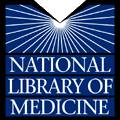


| 
|
Islamic Culture and the Medical Arts |
It was through the written word that formal medical knowledge was transmitted from one generation of physicians to another and from one region to another. The arts of the handwritten book -- calligraphy, illumination, illustration and binding -- were and are highly developed in Islamic culture. While European medieval handwritten books were prepared on vellum or parchment made from animal skin, in the Islamic world nearly all manuscripts were written on paper, which was in plentiful supply in the Middle East by the 9th century. Printing, on the other hand, came relatively recently to the Middle East (essentially not until the 19th century), so that the careful copying by hand of treatises continued to be a living and important tradition through the 19th century. Only by hiring a scribe to prepare a copy by hand, or copying it himself, could a physician possess his own copy of a book.

[484x694 8-bit color GIF, 228368 bytes]
The Aphorisms of Hippocrates in the Latin translation made by Constantinus Africanus (d. 1087) of the Arabic version prepared in the 9th century by Hunayn ibn Ishaq. This manuscript copy was produced in Oxford in the middle of the 13th century. NLM Latin MS 78, fols. 24v-25r
The fluid Arabic alphabet, which reads from right to left, lent itself to numerous decorative forms and abstract patterns, some of which were developed particularly for transcribing copies of the Qur'an, the holy text of Islam revered by Muslims as both the written form of revelation and the actual word of God. The Arabic script was also adopted for other languages, including Persian and Turkish, and calligraphers using these languages developed distinctive decorative scripts and styles of illumination.
The calligraphic skills of the scribe or specialist illuminator were applied to presentation copies of treatises on every subject, including scientific and medical books. In contrast to the illuminated initials used in Western manuscripts which draw the attention to one focal point on the page, in Islamic manuscripts the entire text itself is part of the design. A treatise frequently opened with a broad decorative panel heading, often enclosing the bismillah ("In the name of God, the Merciful and Compassionate") or the title of the treatise. Occasionally the entire first page or double opening will be surrounded by a broad decorative frame with lines of text written in cloud bands. Gilt as well as inks and opaque watercolors were employed in these illuminations.

[382x682 8-bit color GIF, 236227 bytes]
Portrait of a scribe at work, artist unknown. Perhaps intended as a portrait of Sayyid Husayn Yazdi, the scribe of the treatise on wonders of the world comprising the volume. It was painted in Iran sometime before 1546 (953 H), when a large owner's stamp was placed below the painting. NLM MS P29, fol. 173a
Figural imagery does not normally appear in a religious context, but there was a vigorous tradition of figural representation in other contexts, particularly that of science and medicine. Many of the Arabic versions of Dioscorides preserved today are testimony to a continuing and flourishing tradition of scientific illustration. Several profusely illustrated copies were produced, for example, in Baghdad in the 13th century, one of which is notable for its scenes of people gathering and preparing medicaments. Human anatomy was also a topic to receive the attention of illustrators.
![]() Islamic Culture and the Medical Arts Home Page
Islamic Culture and the Medical Arts Home Page
![]() Exhibition and Public Programs Home Page
Exhibition and Public Programs Home Page
![]() History of Medicine Home Page
History of Medicine Home Page
U.S. National Library of Medicine, 8600 Rockville Pike, Bethesda, MD 20894 National Institutes of Health Department of Health & Human Services Copyright, Privacy, Accessibility Last updated: 15 April 1998 |